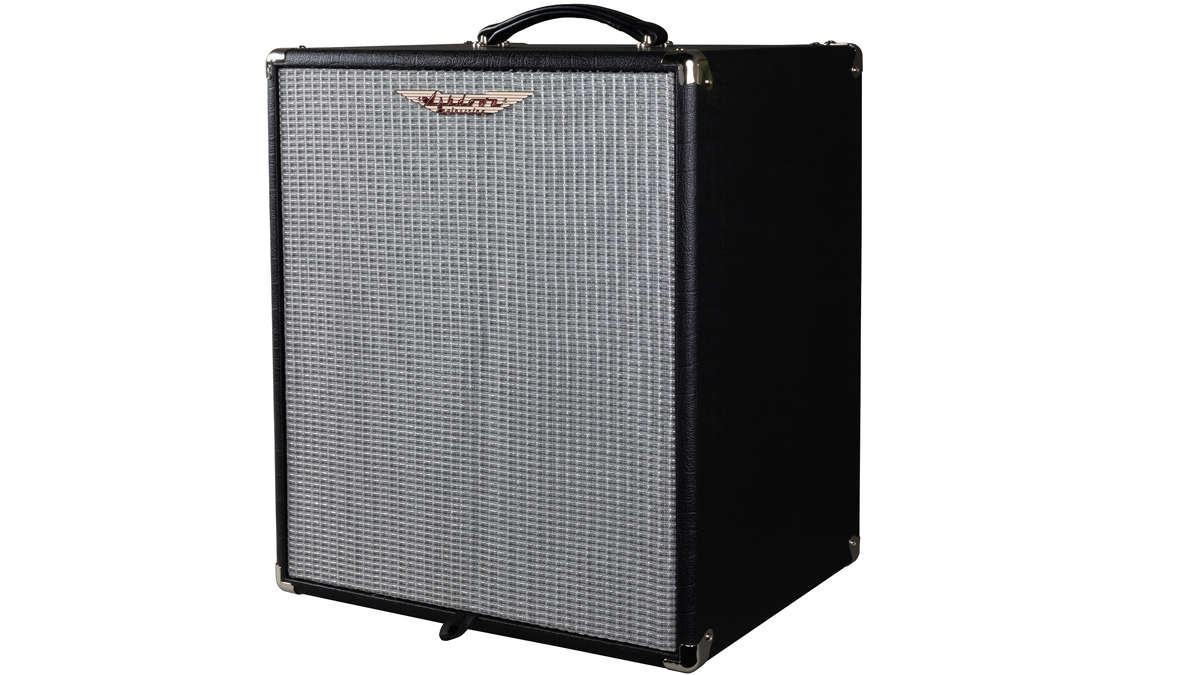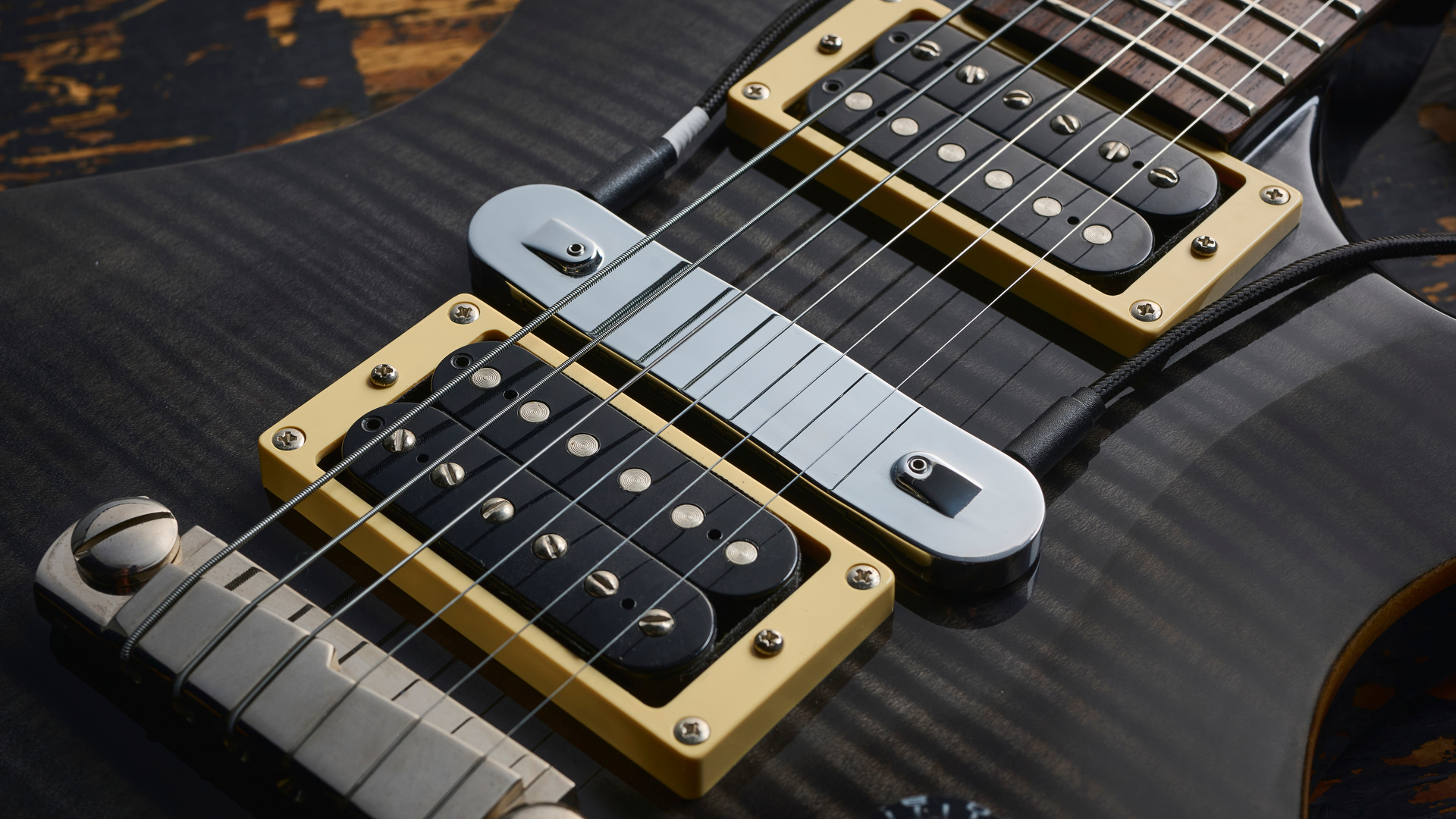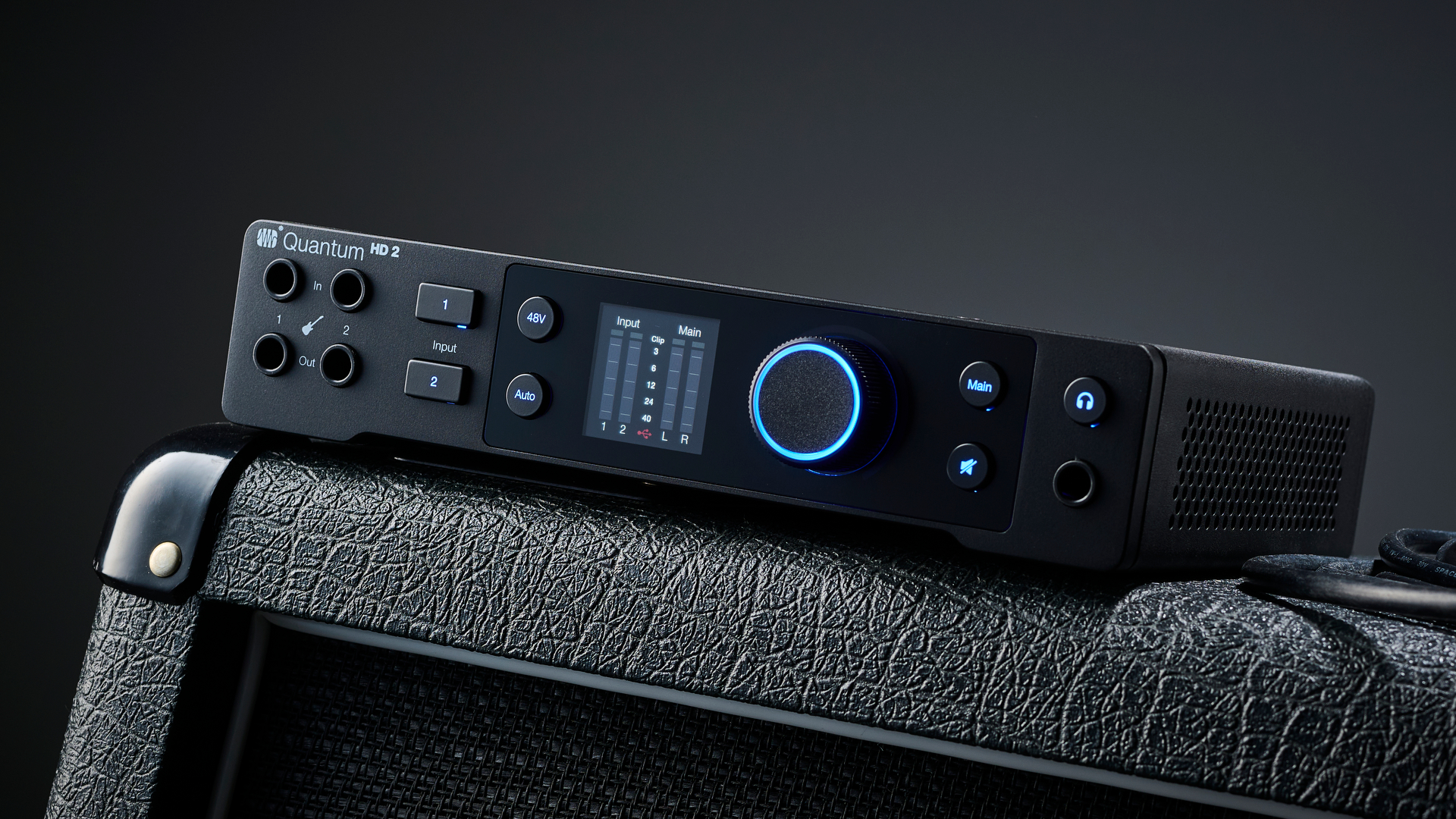Guitar World Verdict
Worthy contenders for your combo shopping list, Ashdown's Studio range punches above its weight with serious tones from compact formats.
Pros
- +
Sensible pricing.
- +
The tones are quality.
- +
Tweakable control panels.
Cons
- -
The Studio 8 is limited a little by its size.
- -
The Studio 15 faces a lot of competition at this price.
You can trust Guitar World
Combos, by their very nature, are a compromise. Attempting to solve size and portability issues, providing enough powe in tandem with cabinet size and dimensions, and adding as many useful features into the space available is a huge challenge.
Here we look at Ashdown’s new Studio 8 and 15 models, two of five new models. What do these combos possess that will entice us to part with our cash?
Build Quality
Both units are constructed from lightweight poplar ply lumber, furnished in a black Tolex covering with chrome corner fittings for protection, plus cloth grilles and thick leather carry handles on the top for transportation.
The Studio 8 is a sealed unit with a custom-designed eight-inch speaker, while the Studio 15 sports a Neodymium 15-inch speaker and tweeter combination with two rear ports for improved bass response.
The Studio 8’s simple design means carrying it from location to location iseasy enough. The increased dimensions of the Studio 15 make portability a little more tricky, but the lightweight materials and Neo speaker mean that lifting the unit isn’t too much of a burden for the user.
Sounds
In terms of looks, Ashdown have gone for stylish and minimal. With three- and five-band EQs, Line In inputs, speaker mute switches and headphone outputs, both units have the essentials for home practice. Both units supply the rounded, familiar Ashdown tones that we know and love - chunky and full-bodied with a touch of grind when pushed.
The Studio 8 is capable of producing some very usable tones and, although the single eight-inch speaker can only convey so much, it puts on an admirable performance. Pick and fingerstyles project well while slapped passages sound tight and punchy.
The Studio 15 is designed more as a rehearsal and gigging unit. Its bigger enclosure and speaker serve a broader purpose and as such, a greater array of tones are possible
There’s a touch of distortion once the Volume control is set at two o’clock - and pushing the bass EQ introduces some mild distortion at an earlier point - but you can’t change physics. A small cabinet and speaker can only convey so much low end, but this compact package fulfils its purpose well.
The Studio 15 is designed more as a rehearsal and gigging unit. Its bigger enclosure and speaker serve a broader purpose and as such, a greater array of tones are possible. The 15-inch speaker is more suited to rounded bass frequencies while the tweeter provides some sparkle and detail to your signal: This can be turned off should you need to do so.
With a five-band EQ, and three controls for low/mid/high mid-frequencies, there’s a versatile preamp to work with. An additional Shape option provides an instant tone alternative should you need it, which tightens up the tone and offers significantly more punch. It’s loud, beefy and easily able to cover a variety of playing styles.
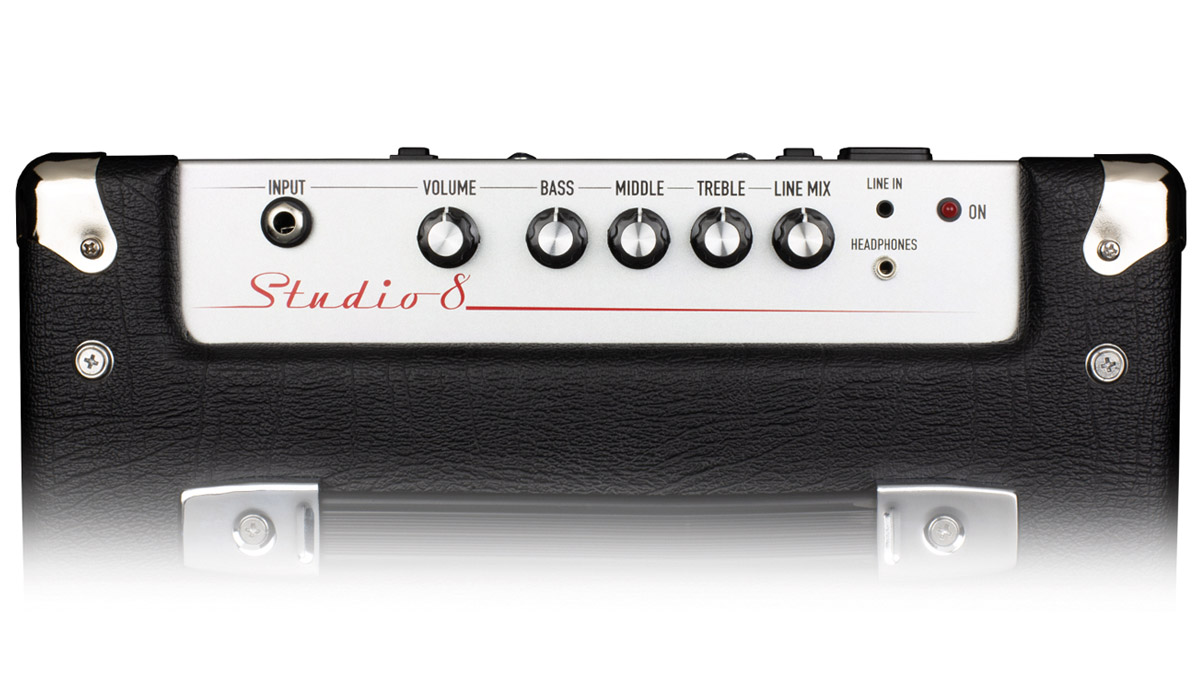
The Studio 8's uncomplicated control panel and compact form make it an ideal practice amp for young bassists.
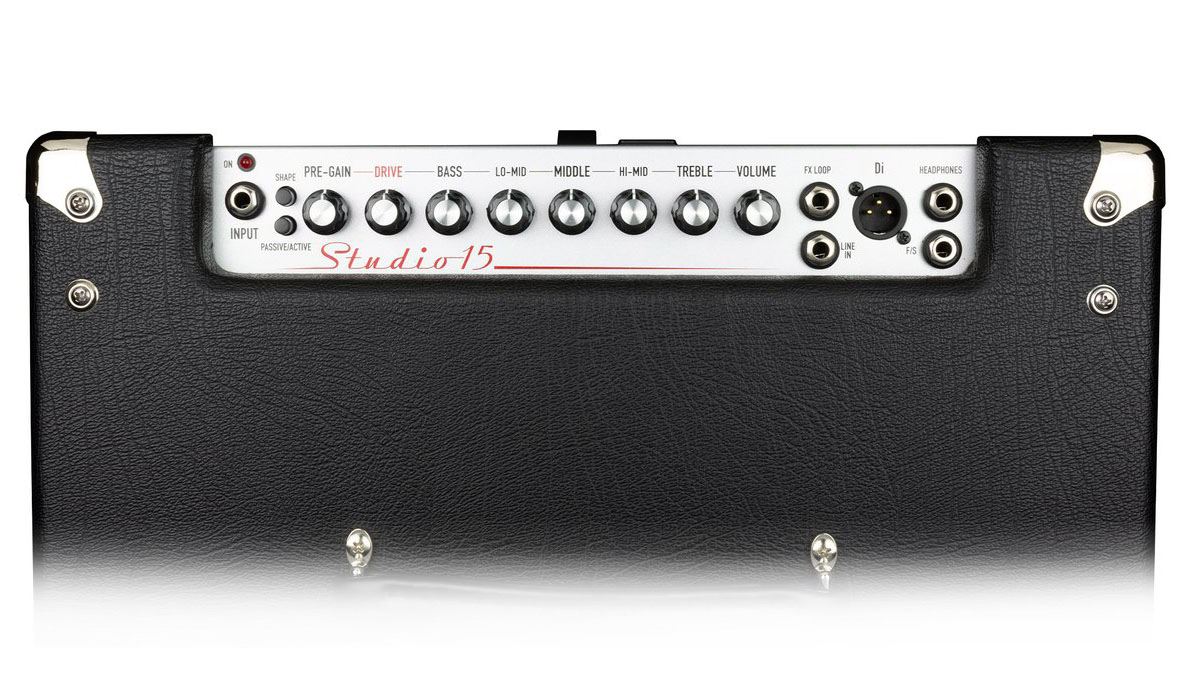
The Studio 15 offers considerable tone-shaping features. It would make an excellent gig-worthy rig, but it's a shame you can't connect an external speaker cabinet.
The Drive option - which can be switched in/out using a footswitch, available separately - is quite abrasive; some players will like it and some won’t, but it’s there if you need added grit and harmonic richness. The rock fraternity will no doubt make great use of it.
One small omission is that neither unit offers outputs for connecting extra cabinets, which would have been a useful option for the Studio 15 as it could have formed the basis of a larger rig.
Conclusion
Coming with five-year warranties, both combos are keenly priced based on what they offer. I can see the Studio 8 appealing to many home players who need a practical, portable amp while the Studio 15 is an all-in-one gigging solution. We’re impressed.
Specs
- Price: Studio 8 $119 / Studio 9 $499.99 [MAP]
- Made In: China
- Power: 30 watts RMS / 300 watts RMS
- Impedance: 8 ohms
- Features: Studio 8: Volume, bass/ middle/treble (+/- 15dB), line mix, speaker mute switch. Studio 15: Shape selector switch, passive/active selector switch, pre-gain, drive, bass, lo-mid, middle, hi-mid, treble, volume, speaker mute switch
- Speakers: 1 x 8” Ashdown speaker / 1 x 15” Ashdown speaker and tweeter
- Dimensions: Studio 8: 390mm (H) x 365mm (W) x 235mm (D) / 15.35” (H) x 14.37” (W) x 9.25” (D) Studio 15: 565mm (H) x 460mm (W) x 390mm (D) / 22.24 (H) x 18.11” (W) x 15.35” (D)
- Connections: Studio 8: ¼” jack input, 3.5mm auxiliary line input, 3.5mm headphone output; Studio 15: ¼” jack input, ¼” jack FX loop, ¼” jack auxiliary line input, balanced XLR DI output, ¼” jack headphone output, ¼” jack footswitch input
- Weight: 13.4 lbs / 24.6 lbs
“Our goal is to stay at the forefront of amplification innovation”: How Seymour Duncan set out to create the ultimate bass amp solution by pushing its PowerStage lineup to greater heights
“It’s a game-changer for me”: Laney and Nathan East team up for a versatile signature bass head that ends a 40-year wait for the session legend
